But let’s take a moment to acknowledge the efforts of the team of stylists who work hard to put together such impressive looks for the stars. As Mouni Roy told ETimes on the awards night, all credit goes to her designer Mohit Rai for styling her for the red carpet. “The styling industry today is a kind of a revolution. Our stylists have made our lives so much easier than before. You just make one call and the next day or 2-3 days later you are trying on your outfits and then it’s done! There’s a hair and make-up team to make you look so presentable and pretty,” she quipped.
Gone are the days when celebs struggled to decide on their red carpet looks. They now have a dedicated team of stylists at their beck and call to put together a stunning look for any event. Red carpet appearances have become a thing and are most talked about on social media. It is a star’s time to shine and make a statement, and styling thus becomes a colossal responsibility.
In today’s #BigStory, we take you behind the scenes of celebs’ red carpet statements and decode what goes on before and after the event, how a stylist puts together a look, how long it takes, what happens to the outfit after the gala night and more. Read on.
The mutual understanding
Red carpet appearances have become a lot about self expression. Every celeb has a distinct personality and they know well how they want to project themselves and make a style statement. It is the personality of the star that the stylists and designers are working on. There are several factors to consider – trends, likes and dislikes of the star, comfort, theme, weather, quirks and preferences and a lot more. It is thus essential that a stylist has a great mutual understanding with the celeb.
Maneka Harisinghani has been styling red carpet queen Malaika Arora for about a decade. “We don’t really discuss stuff,” she says. “Malaika is a woman of very few words. It’s strange but there’s never really a brief. I am just told what the event is and as per that whatever I think can work best for the occasion, we pull some options and we just head for trials. There is an implicit trust.”
Maneka has also worked with new generation actresses like Janhvi Kapoor, Nora Fatehi and many others. “Some people do tend to give a brief and they are very specific about what they want. I feel it works well for the artist if they go with the stylist’s vision. If you impose your vision on every stylist, you will just circle in the same orbit and you will get the same stuff back,” she adds.
Known for styling Ranveer Singh, Nitasha Gaurav agrees that the relationship between any artiste and a stylist is a very close one. “You understand what their mindset is, what their likes and dislikes are. On the other hand, you also help them grow. You introduce them to new things, new ideas etc. And because you are trained, you know what works and what does not, what one should look at. It’s an amalgamation of all these things. You have an understanding of the person but you are also bringing in your professional abilities. It’s a lot of trust between two people,” she says.
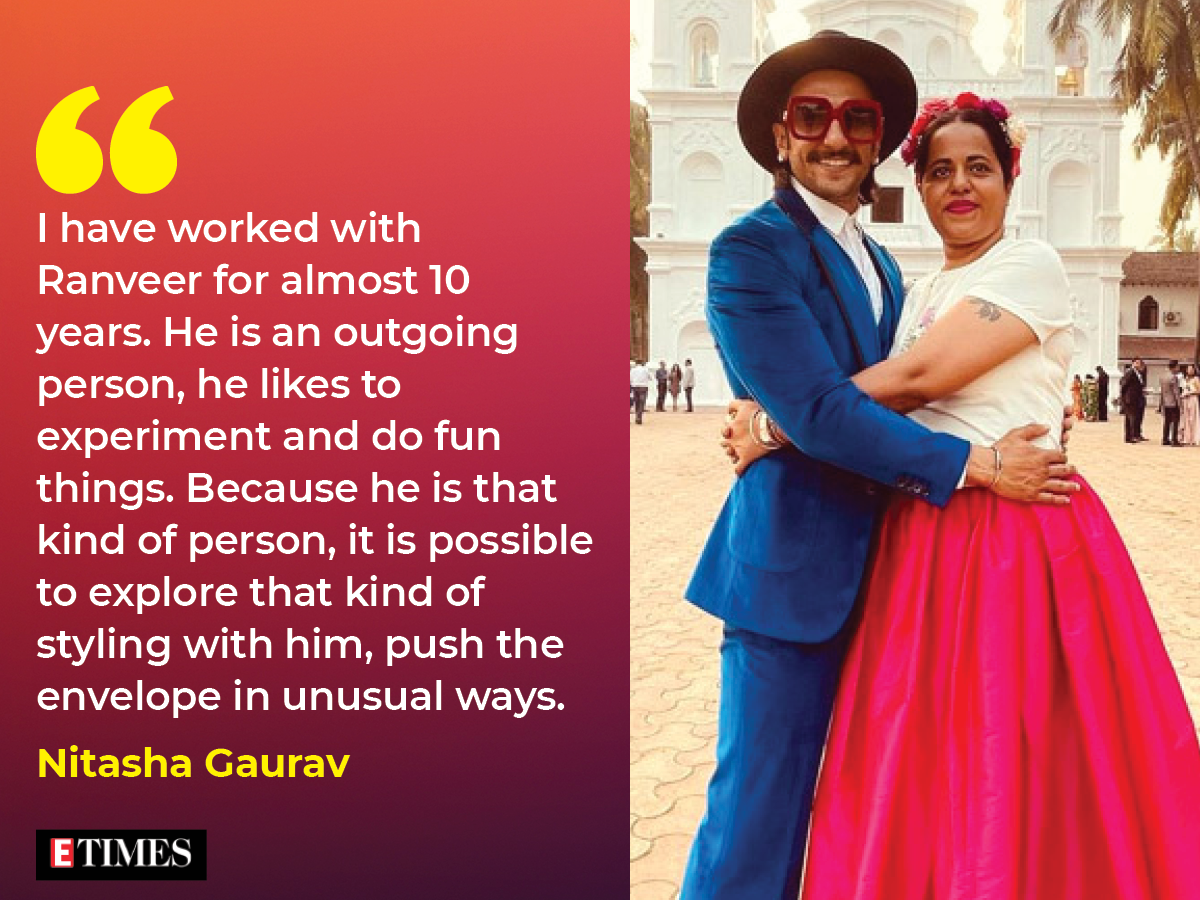
Deciding on a look is a two way street and Nitasha says you can’t force somebody to wear what they are not comfortable with. “I have worked with Ranveer for almost 10 years. He is an outgoing person, he does like to experiment and do fun things and all of that. Because he is that kind of person, it is possible to explore that kind of styling with him, push the envelope in unusual ways. I can’t think of any other artiste this can be done with. Everybody has their own sensibility and style,” she adds.
Having worked with stars like Katrina Kaif, Bhumi Pednekar, Sara Ali Khan, Kareena Kapoor and many others for years, Tanya Ghavri thinks it’s just about building that connection to understand what kind of human beings these stars are, what their likes and dislikes are, what their comfort is. “Someone like Kareena with whom I have been working with for 15 years, I feel like my work with her has gotten better. When we started, she was also figuring, I was also figuring her style. When I first started working with Sara, and the way it is now are very different. Earlier she was kind of rebelling but now she is very trusting and she will let the person take a call on what will work on her. So as we work with people, it tends to get better with time,” she says.
Mohit Rai has worked with the likes of Kareena Kapoor, Sonam Kapoor, Priyanka Chopra, Janhvi Kapoor and many others. He believes all actors do have a distinct style and personality that stylists have to keep in mind. “Their body type, comfort, what colours they like… Many a times we have to suggest and come up with ideas to build an image. The large part of the fantasy of being a star is the way you look.”
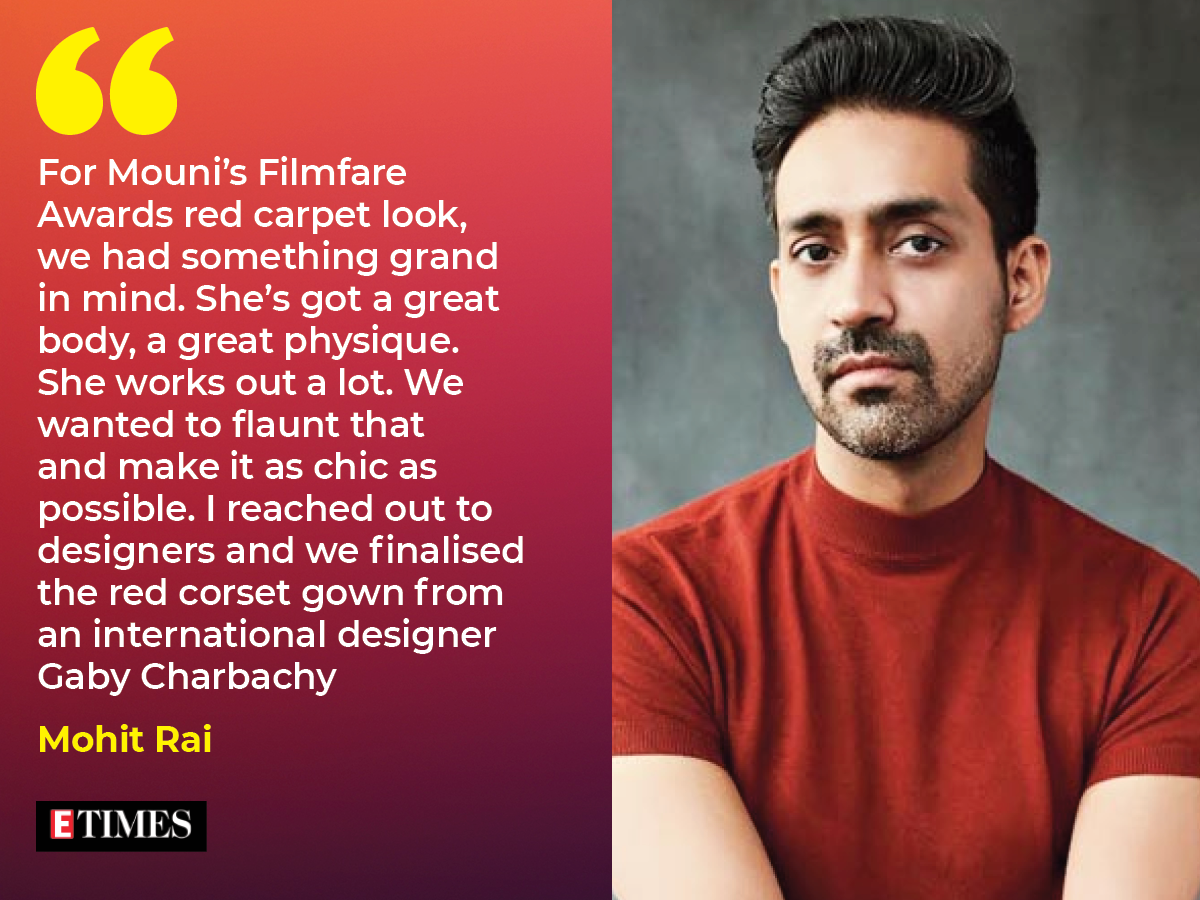
Mohit also shares how he styled Mouni Roy for Filmfare Awards night. “We had something grand in mind. She’s got a great body, a great physique. She works out a lot. We wanted to flaunt that and make it as chic as possible. On the basis of the brief, I reached out to designers and we finalised the red corset gown from an international designer Gaby Charbachy,” he says.
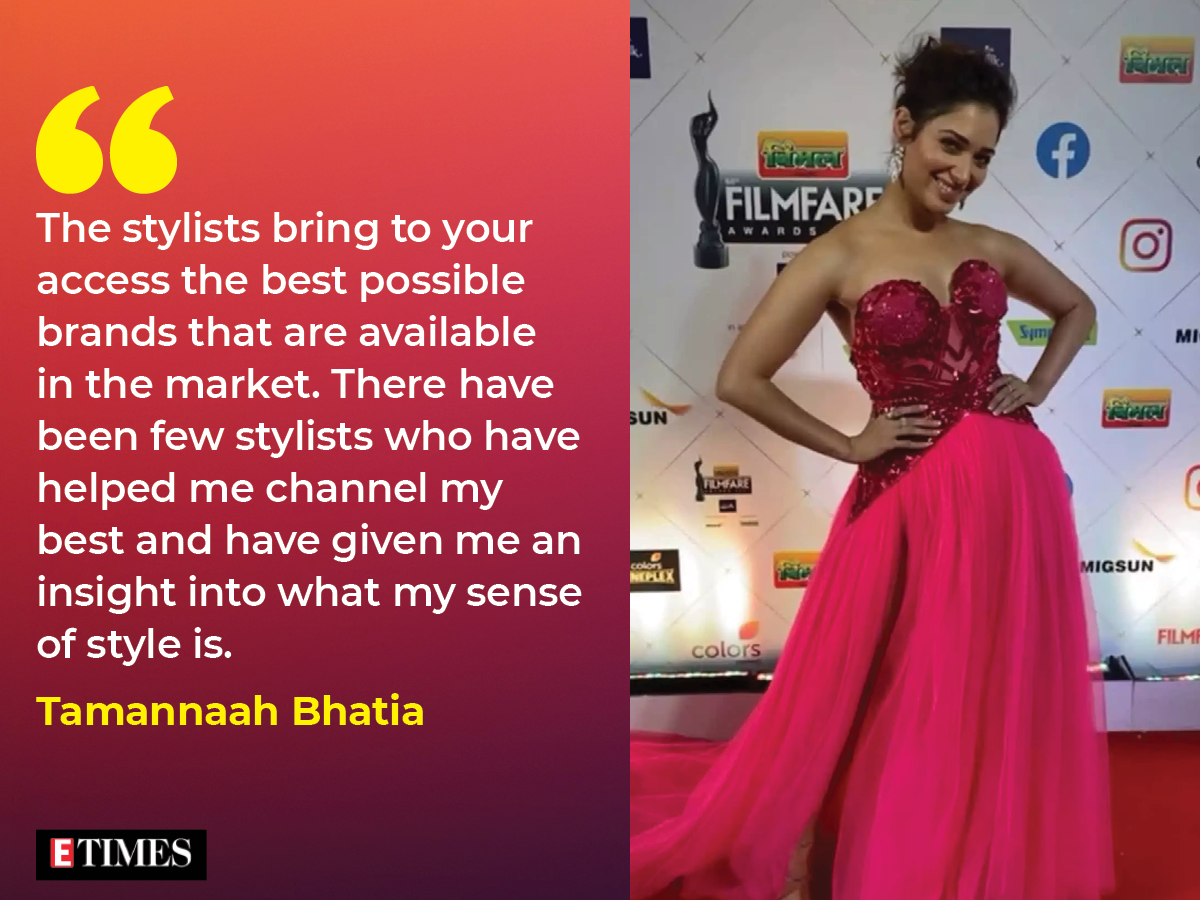
Actress Tamannaah Bhatia’s red carpet style has evolved over the years. She credits this to her team of stylists. “I think I got my dose of education from my stylists who worked with me at different points of time. Ami Patel helped me define what are the things that flatter my body, what I would look best in. But largely it has been an internal journey of first figuring out who you are, what are your basics as a person. The stylists bring to your access the best possible brands that are available in the market. There have been few stylists who have helped me channel my best and have given me an insight into what my sense of style is,” she says.
The briefs
While there is a mutual understanding between the stars and their stylists, there are often a set of specific dos and don’ts that the stylists are made aware of. Different stars have different preferences, but they can be majorly narrowed down to one factor – comfort.
“The major criteria is comfort,” says Malaika. “I should feel comfortable and confident in what I am wearing. I am not afraid of experimenting, so colours or a specific style only are never in my specifications.”
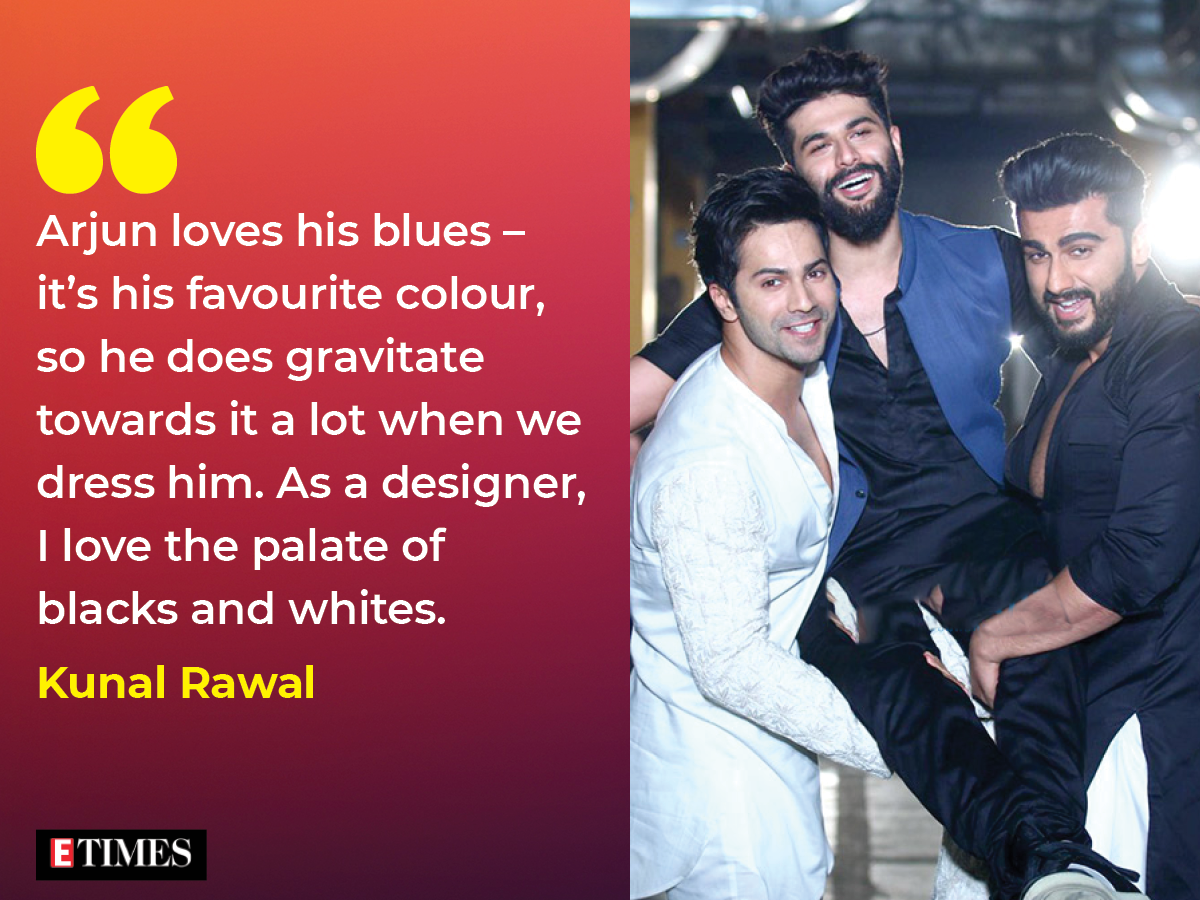
Boyfriend Arjun Kapoor too likes to be comfortable, reveals designer Kunal Rawal. “We always take that into account when we design for him,” he says. “When it comes to colours, Arjun loves his blues – it’s his favourite colour, so he does gravitate towards it a lot when we dress him.”
Mouni Roy chooses to be very involved with the stylist when choosing a red carpet outfit. “We either speak on the phone or meet up and we go over what we feel like doing on the red carpet. We decide upon what kind of outfit we are going with, that’s the only specification. I have been working with them for many years now, so they know what would and wouldn’t work on me. I don’t take too many trials, during my first trial itself I would know what I want to wear. If not first then the second one definitely. I am very solid when it comes to my decision making with an outfit. If I like something we do a trial, check for alterations. It’s pretty fast and simple,” she says.
Tejasswi Prakash has always been fascinated with fashion and likes to get involved at every opportunity she gets. “I try and put forth my ideas and the stylists help materialise them. I’ve always felt my style is an expression of who I am and the point of my outfit is to get that across and the team always helps me get that across. I wholly trust my stylists. They are professionals, they know better. I don’t have any major qualms except maybe that I want to feel comfortable but all in all I trust their judgment,” she shares.
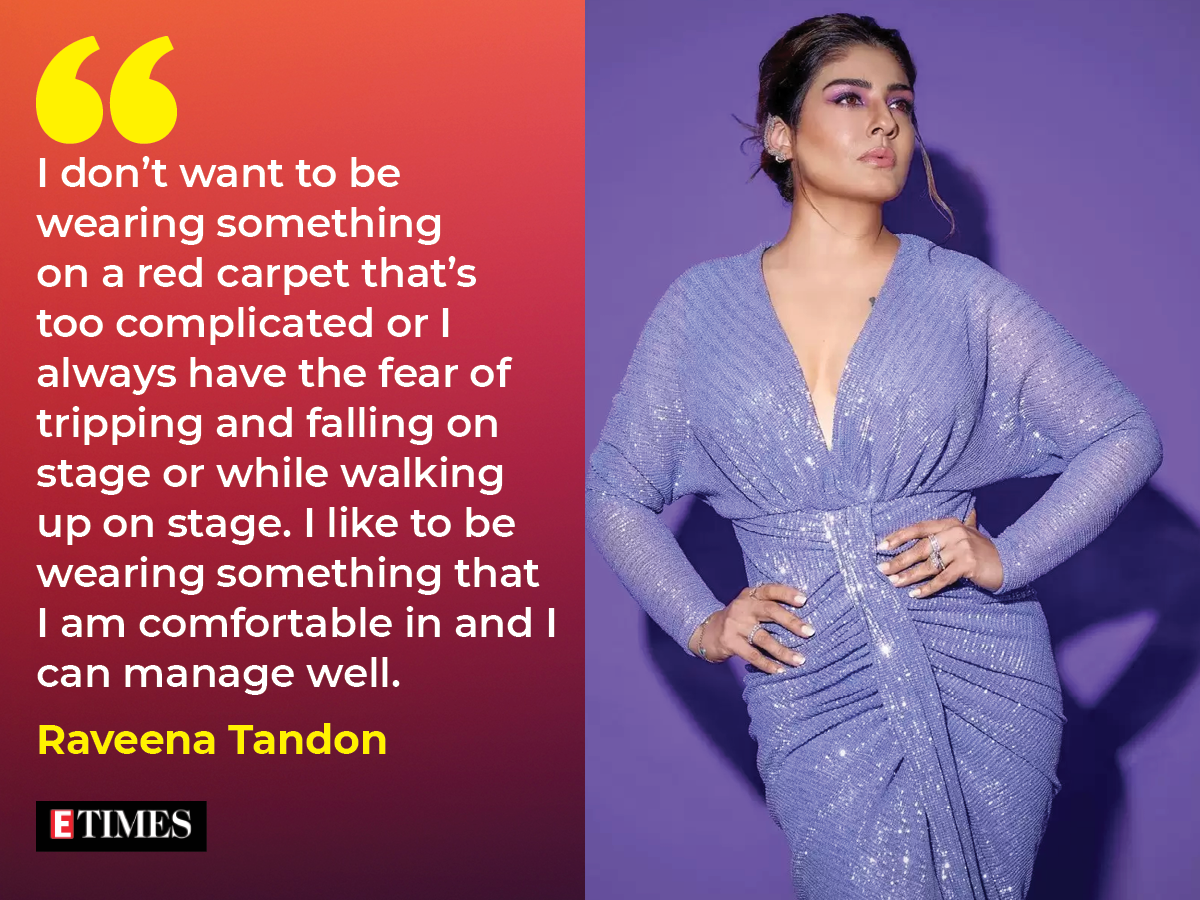
Raveena Tandon too has her dos and don’ts for her stylist. “I don’t want to be wearing something that’s too complicated or I always have the fear of tripping and falling on stage or while walking up on stage. I like to be wearing something that I am comfortable in and I can manage well,” she says.
While Isha Koppikar has her criteria and ground rules laid for her stylists, she lets them try out their creativity and then makes changes according to her taste. “I like to be comfortable in what I wear and it has to be subtle but glam,” she says.
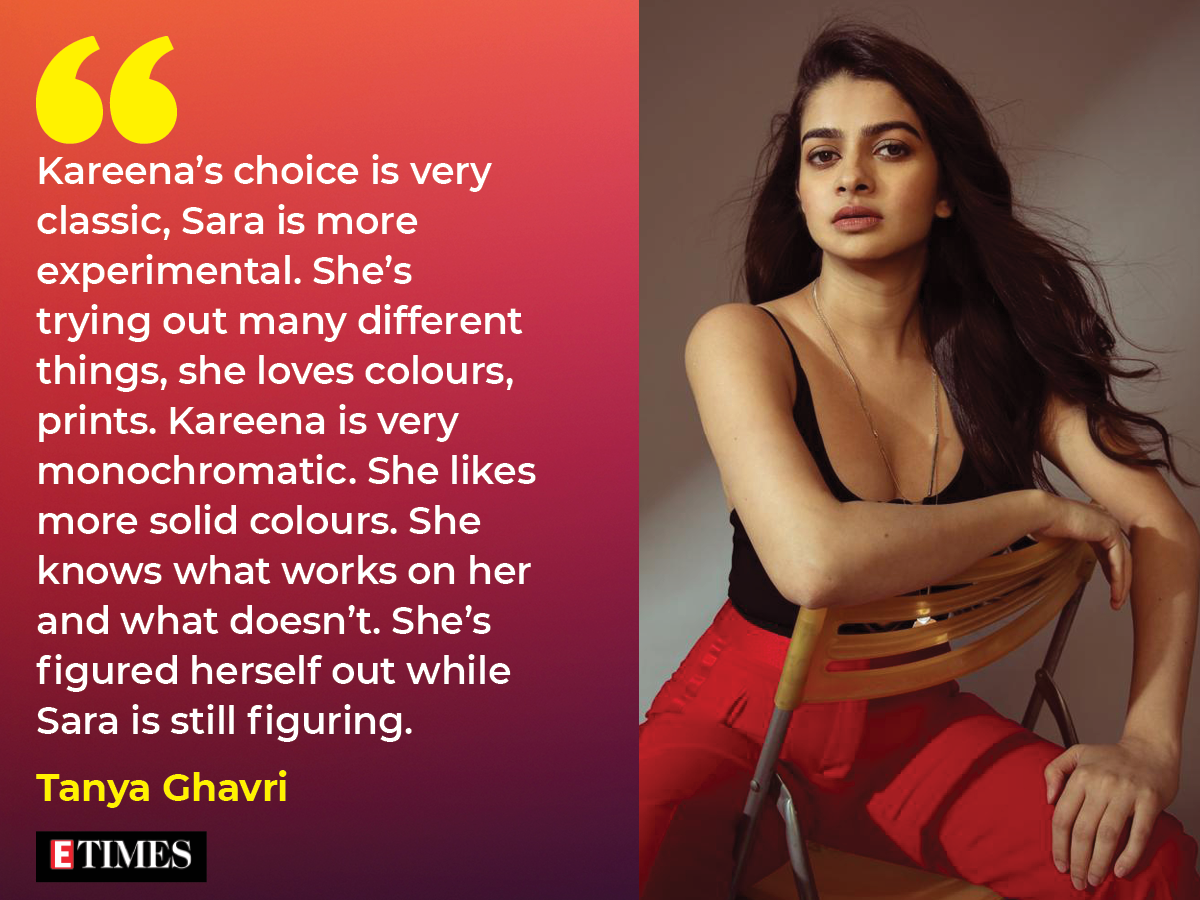
Tanya Ghavri says Kareena Kapoor’s choice is very classic, and Sara is more experimental. “She’s trying out many different things, she loves colours, prints. Kareena is very monochromatic. She likes more solid colours, she’s more of a classic. She knows what works on her and what doesn’t. She’s figured herself out while Sara is still figuring,” she notes.
Sourcing the outfits
Once the look and vision is decided upon, the sourcing begins. The stylists approach designers both in India and abroad depending upon the timeline and the budgets. Tanya Ghavri breaks down the process, “When I get a call for an event, I start looking online. I check out look books of designers, and contact them. Whatever I think will be good for the actor, I send it to them. We have a discussion and then whatever the actor ends up liking and is available with the designer, we call for it and do trials and fittings. We then try the fittings and discuss the hair and makeup. Collectively, we have 2-3 options and then we shortlist the one we like the most. It could take upto three weeks to finalise a look.”
Sourcing outfits from international designers can be quite a task, not to mention time consuming as well. “Most designers are keen to collaborate with actors who have a certain kind of following so that they get a good exposure to market their designs from the barter,” says Mohit Rai.
Maneka outlines details of the outfit sourcing process. “We first research brands from different countries, we touch base with them. The conversion rate of people showing interest in an Indian artiste is – if we approach 200 people, 1 person will show interest. That’s the ratio. Then we have to figure out the shipping cost because most artistes are not willing to pay that. And customs in India is 77 percent of the value of the garment. Many a times the package is not cleared even after the event is over. It is a lot of administrative work. There are also instances of one artiste feeling that you are dressing the other artiste better. But that’s not on us, but the designer who wants to collaborate. Because it’s a social media barter and it depends on their social media page. It eventually boils down to how many followers celebs have and how their page looks,” she explains.
The challenges
While the stylists make an artiste’s life easy, it’s not always so easy for them to do so. “It seems like a fun job, but it’s not,” cautions Maneka. “Back to the day when it was domestic sourcing, life was very different, till about eight years back when we started sourcing internationally. What managers and artistes don’t understand is that to get one international piece, it will take about two months of negotiation with the designer. It will be held up for customs for over a month. That’s the kind of coordination we have to do everyday. Sometimes it takes months and months of planning for a look. There is a lot of pre-planning and investment involved even before being booked for a job.”
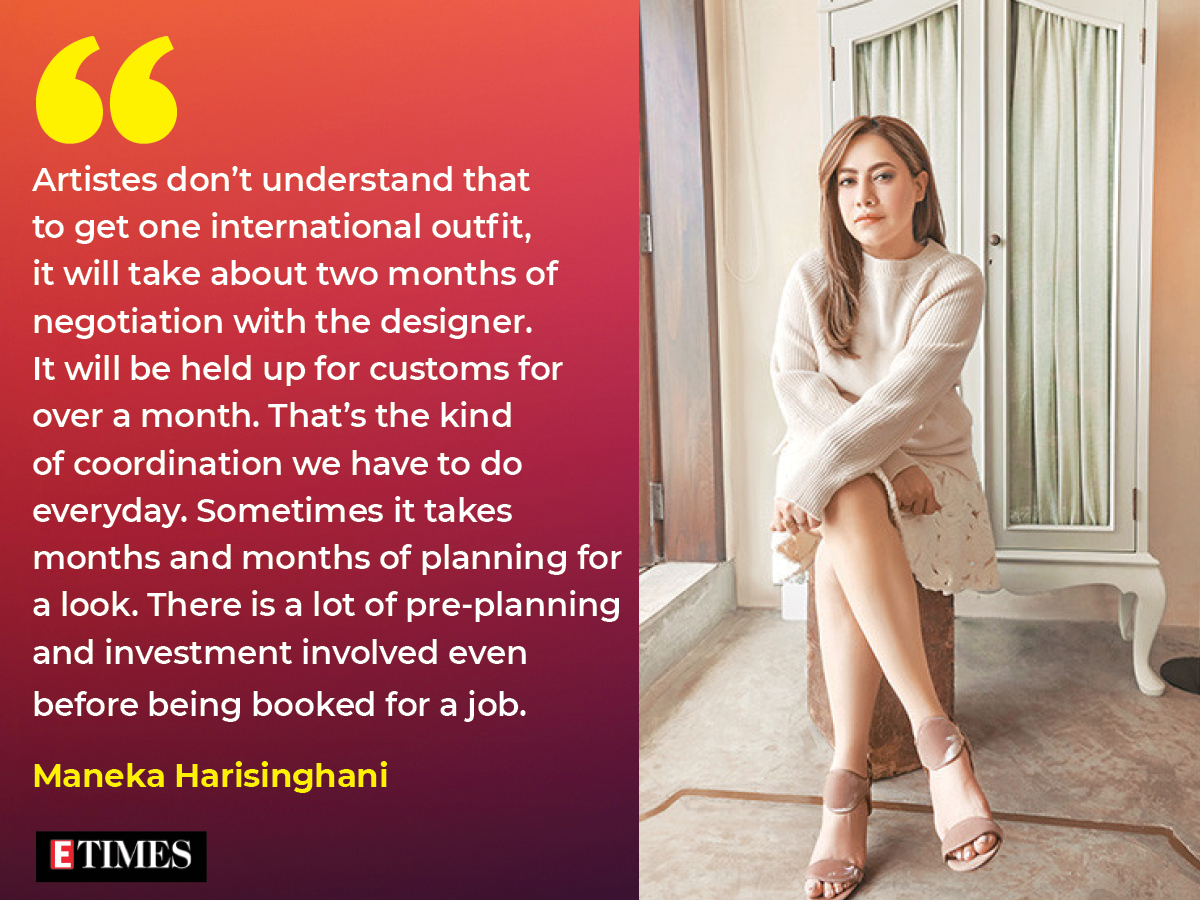
“Sometimes the celebs are not even sure if they are going to attend an event or not till the last minute. So we still have to keep stuff ready in case they call last minute. 99 percent of my sourcing is international. So I have to pre-empt what my next few months are going to be like, what are the kinds of events that I have, and I have to pre-order. Sometimes stuff is used, sometimes it’s wasted and we send it back. We spend all that money and it’s wasted,” she further explains.
Another challenge that Maneka point out is to crack a social media barter with international designers. “What most artistes don’t understand is that at the end of the day we are just agents in between, with an aesthetic sense. They need to have a decent amount of following, they need to invest in a good photoshoot that will benefit the designer. For the international designers to part with their pieces for a few months needs to have some tangible benefits for them. That is the struggle,” she explains.
Fashion faux pas
In the world of glamour, a fashion faux pas is like a sartorial sin. From something as small as an unwanted crease to an unexpected slip up, a fashion faux pas can ruin an otherwise perfect red carpet moment. It’s always better to be prepared and stylists also make sure of that.
“When we dress stars for an event, we make sure that all the bases are covered. If there is a possibility of something peeking and showing, all that is covered in advance. We test on camera after the artiste has tried the outfit under harsh light, whether the outfit is becoming too transparent. Sometimes we even do the dummy trials on our assistants and we test it under harsh lights, how it looks, whether it creases and such other factors,” says Maneka.
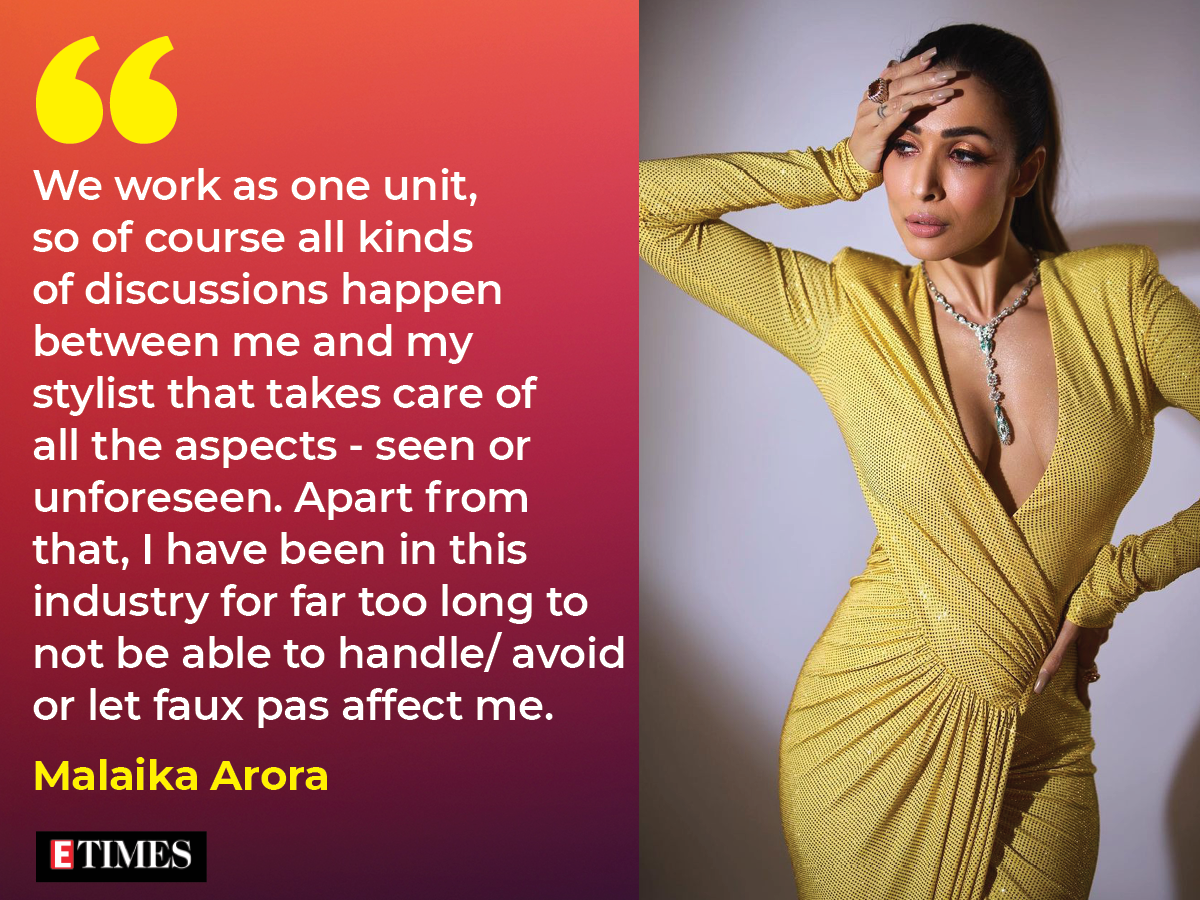
“We work as one unit, so of course all kinds of discussions happen between me and my stylist that takes care of all the aspects – seen or unforeseen,” says Malaika. “Apart from that, I have been in this industry for far too long to not be able to handle/ avoid or let faux pas affect me.”
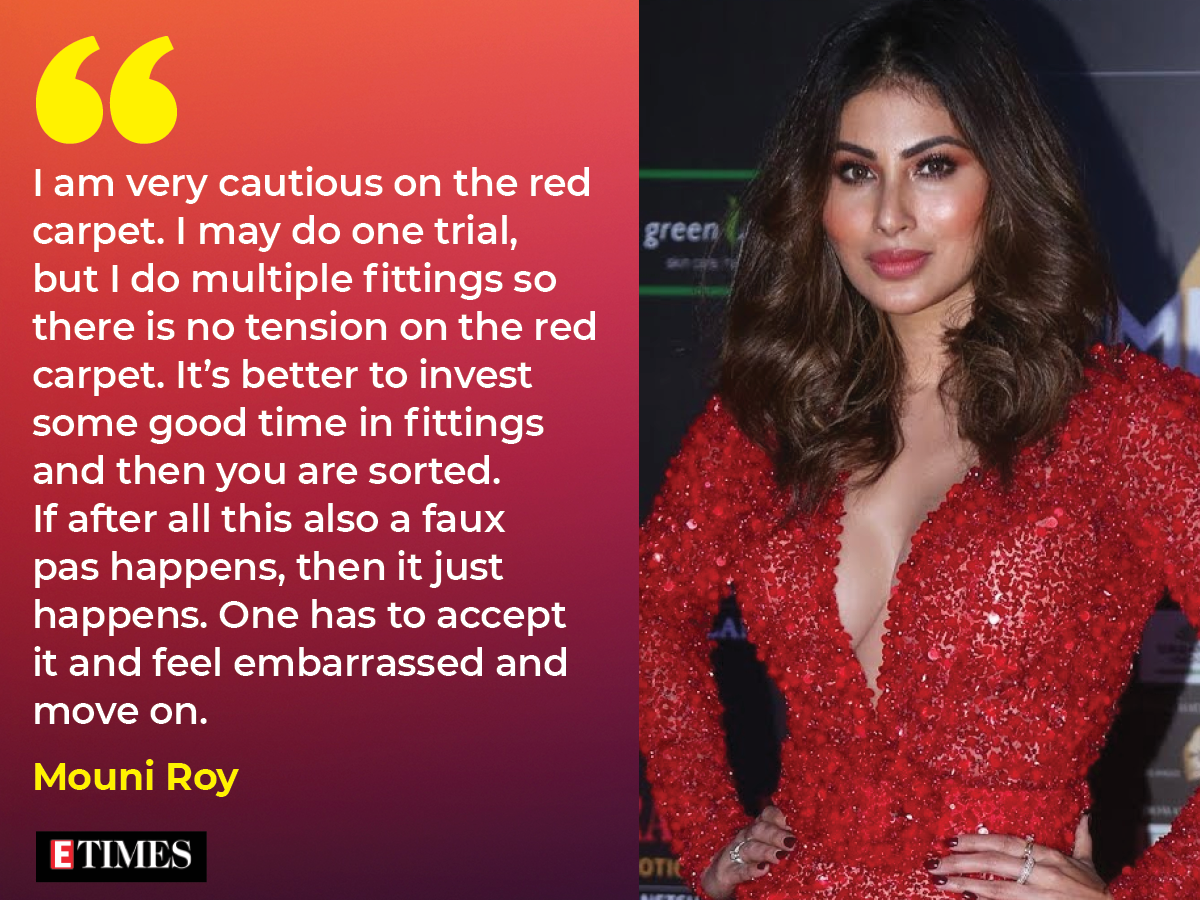
Mouni Roy is always the cautious one on the red carpet to avoid a faux pas. “I make sure everything is fitted properly, stitched up, and all alterations are done. I may do one trial, but I do multiple fittings so there is no tension on the red carpet. It’s better to invest some good time in fittings and then you are sorted. If after all this also a faux pas happens, then it just happens. One has to accept it and feel embarrassed and move on,” she says.
Tejasswi believes fashion can be fragile sometimes. “As much as I adore statement outfits, they don’t always keep the way you’d want. Not all pieces move with your body. The key is to be graceful about it. No one causes a faux pas on purpose and all we can really do is be aware of how you handle yourself. But most times my stylists emphasise on comfort and care so I don’t end up in a situation like that,” she says.
Nitasha feels thankful no such thing ever happened with Ranveer. “But stylists are usually prepared for faux pas moments,” she says. “They don’t just have one outfit. There will be backup options in case something doesn’t work out. We take several options for trials also. So by chance if something is not working out then there is a backup option.”
What happens to the outfits after the event?
Compared to 10 years ago, styling has become a very organised industry. “Stylists curate a look that an actor can carry at an event. The actors don’t pay at all for their red carpet outfits. They collaborate with designers who get spoken about, and get the publicity they need. Thereafter the outfits are returned to the designers,” explains designer Rohit Chaturvedi.
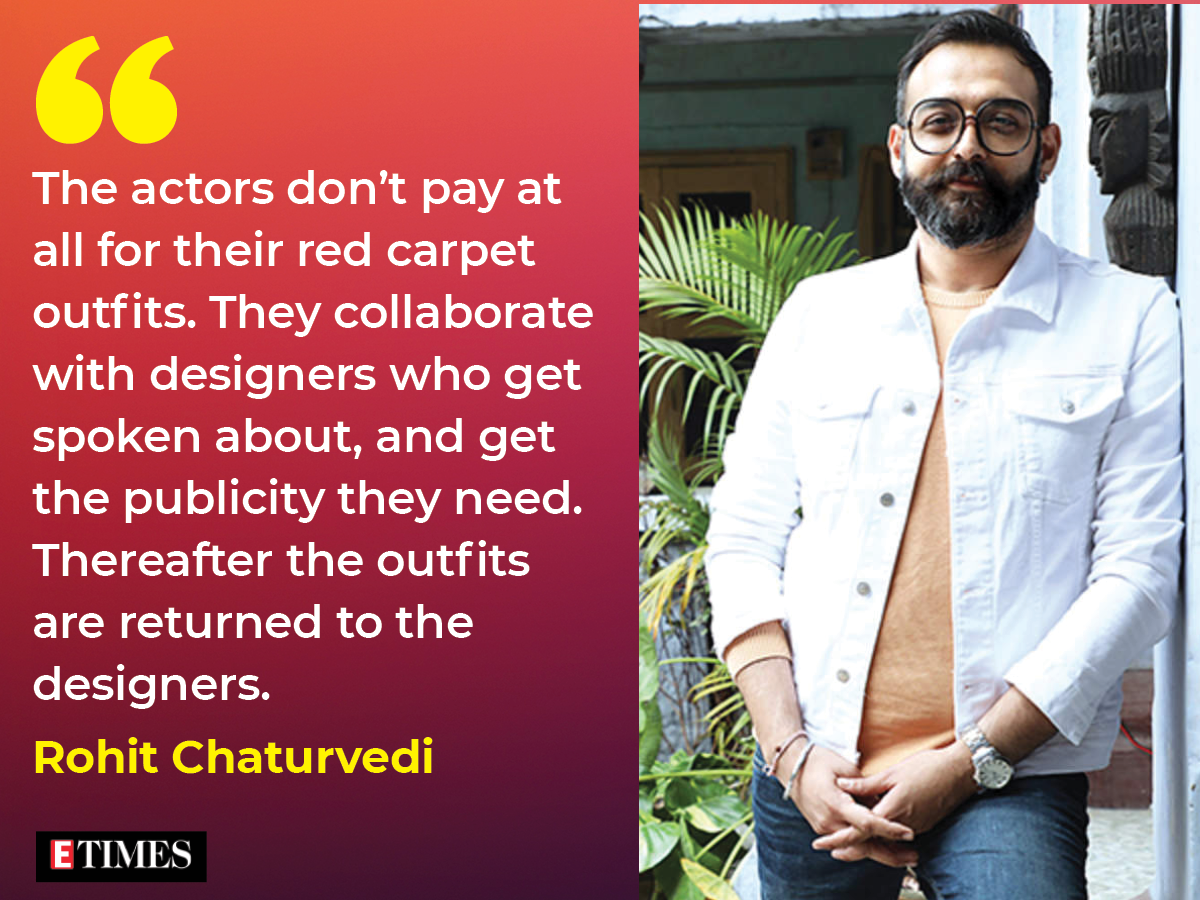
“I never keep my outfits after my appearance,” says Mouni. “Artistes and people in the fashion industry have no space left at home to hoard so many outfits. And red carpet outfits are pretty heavy. So mostly they are returned.”
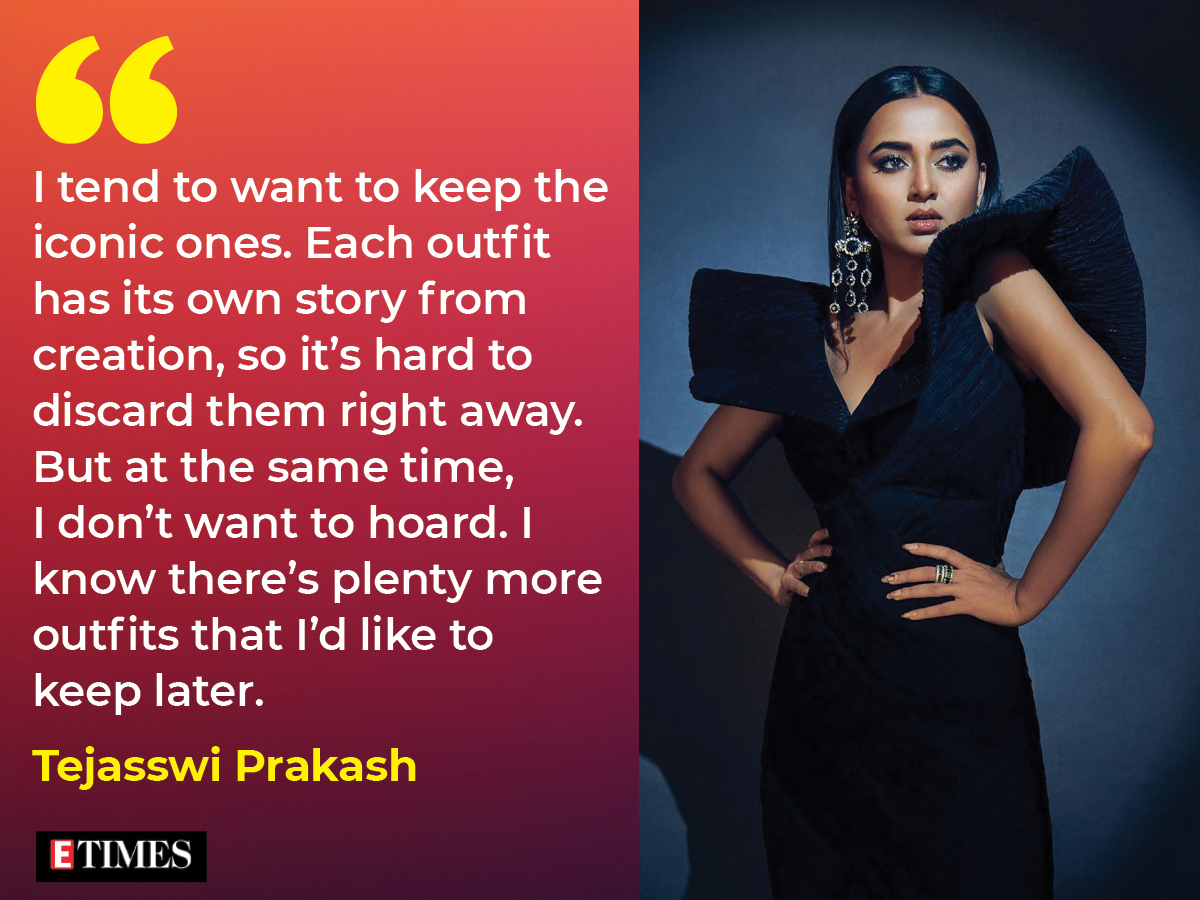
Tejasswi, on the other hand, tends to want to keep the iconic ones. “Each outfit has its own story from creation, so it’s hard to discard them right away. But at the same time, I don’t want to hoard. I know there’s plenty more outfits that I’d like to keep later,” she concludes.
